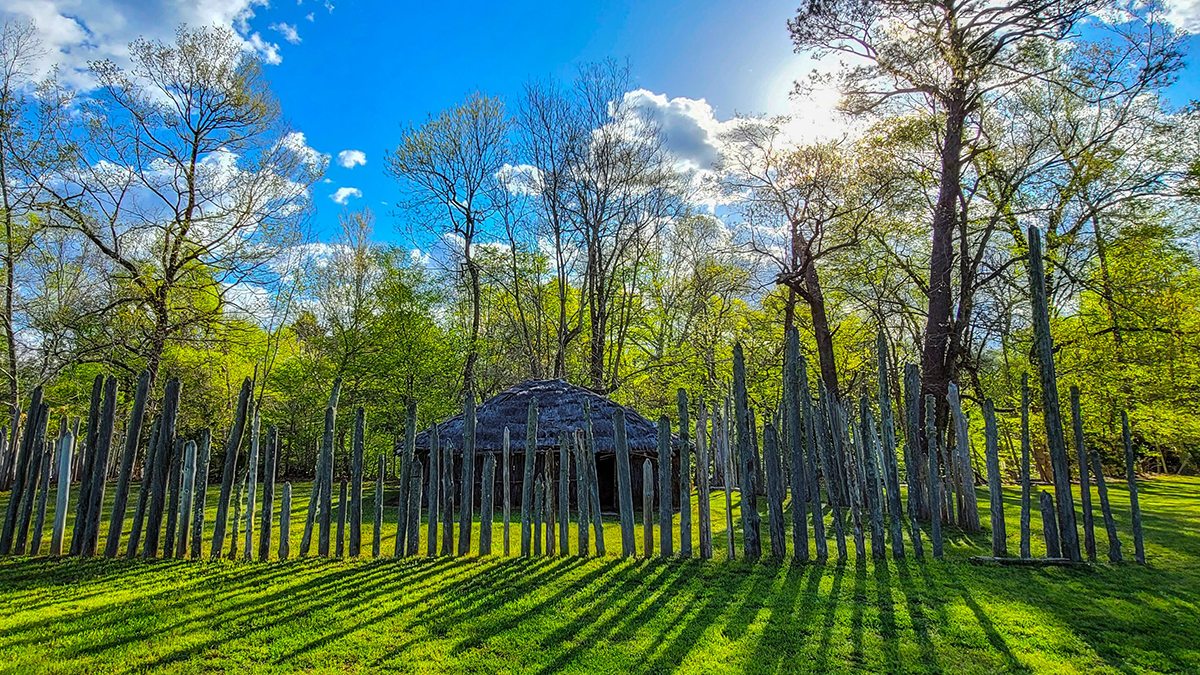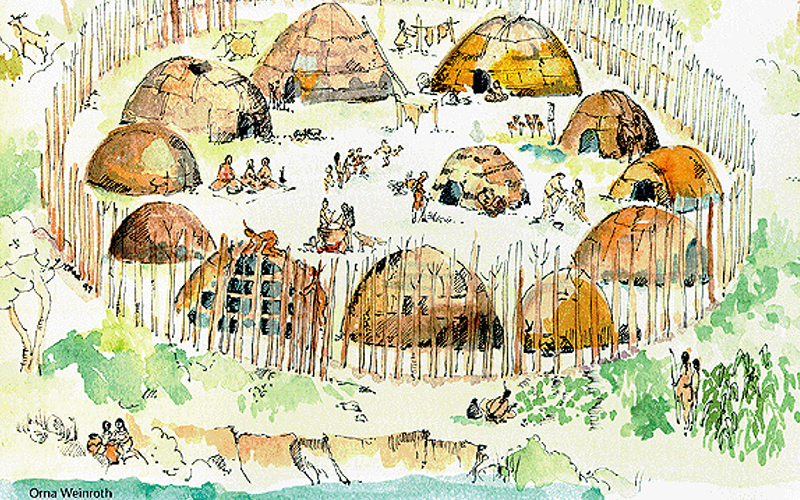Indigenous Peoples Day: appreciation for contributions, historical places
To honor today’s observance, learn about two nearby Native American sites and reasons for treating such sacred land with reverence.

It’s not only important to remember the contributions that Native Americans have made to the United States on Indigenous Peoples Day but also every day thereafter, according to Danielle Hiraldo, director of Carolina’s American Indian Center.
“For a long time, the American narrative often erased Indigenous peoples and our contributions made to this country. Having a day that honors that resilience is an important step to combat that erasure. As we celebrate this day, it is important to recognize the diverse cultures and vibrancy that exist within our Indigenous communities,” said Hiraldo.
To help you celebrate Indigenous Peoples Day, consider visiting two historic sites near Chapel Hill. They are the Occaneechi Village Replica Site in Hillsborough and Town Creek Indian Mound in Mt. Gilead.
“In North Carolina, our history and continued presence can be found in the many places and spaces that have informed who we are as peoples,” said Hiraldo, a citizen of the Lumbee Tribe of North Carolina.
Whether or not you choose to visit the sites, Hiraldo asks you to pay attention to what makes such places sacred. “When I think of sacred land, I’m reminded of Vine Deloria Jr.’s four categories of sacred land: something of great importance has taken place; sacred by actions of men; places of overwhelming holiness; and new revelations at new locations,” said Hiraldo, referring to the Native American author, theologian, historian and political activist. “When we visit such places we must go in reverence for the land, people and the sacredness that connects the two.”

Artist Orna Weinroth’s depiction based on the Fredricks archaeological site of an historic Occaneechi village that was visited in 1701 by the traveler John Lawson. The nearby replica village in Hillsborough, North Carolina, is also based on the Fredricks site.
Occaneechi Village Replica Site
This reconstructed 17th century village on the banks of the Eno River is about one-half mile from where the Occaneechi tribe had a village 300 years ago. The Occaneechi Band of the Saponi Nation website includes video of the village, which is based on the site’s archaeological plan.
Town Creek Indian Mound
The Town Creek Indian Mound provides a glimpse of pre-Columbian life in the state’s Piedmont region. The site was a political and cultural center located on a low bluff where Town Creek and Little River meet. The area around the earthen mound is characteristic of 11th-century Indigenous culture in the Pee Dee River Valley and has undergone excavations since 1937.
Resources
- Ancient North Carolinians, the University’s virtual museum of North Carolina archaeology, showing 3D artifacts, a list of American Indian sites in the state and lots of other information.
- Native Land map.
- North Carolina Commission of Indian Affairs.
- Tribal Nations of North Carolina.
- UNC Pembroke’s Museum of the Southeast American Indian.
Hiraldo said that she looks forward to the Carolina community continuing to celebrate Indigenous peoples beyond Oct. 10 and Native American Heritage Month in November. “Let’s elevate how Indigenous peoples contribute to the larger U.S. narrative that often ignores us.”




